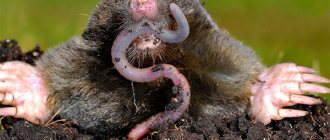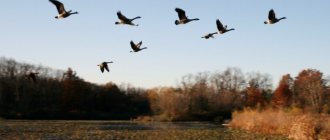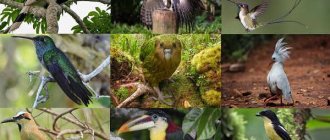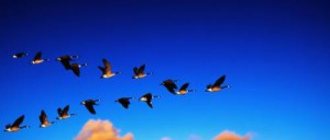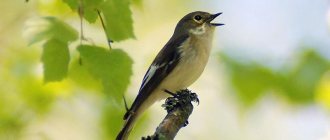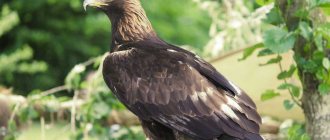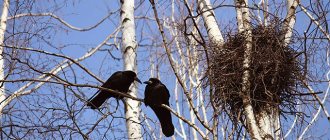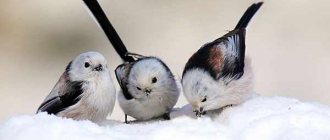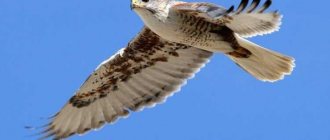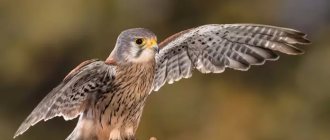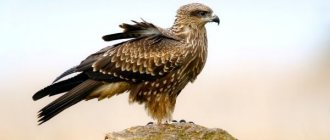The Moscow region is home to a large number of different species of birds. Swampy and forested areas, as well as wide fields near Moscow, have become a habitual place of residence for rare species of birds, which can rightfully be called unique in their characteristics.
With the onset of cold weather, most bird families in this region migrate to cities, where frosty winters are much easier to endure compared to weather conditions in the wild. That is why in parks and on the streets of big cities, in the winter, you can often find bird species such as the cuckoo, chaffinch, goldfinch and wagtail. And with the first warming, these birds return to their native places.
Stork White
| Latin name: | Ciconia |
| Kingdom: | Animals |
| Type: | Chordata |
| Class: | Birds |
| Squad: | Storks (anklefish) |
| Family: | Storks |
| Genus: | Stork |
| Body length: | 80-105 cm |
| Wingspan: | 1.5-2 m |
| Weight: | 4 kg |
— Advertising —
Black stork
Common lentils
| Latin name: | Carpodacus |
| English name: | To be confirmed |
| Kingdom: | Animals |
| Type: | Chordata |
| Class: | Birds |
| Squad: | Passeriformes |
| Family: | Finches |
| Genus: | Lentils |
| Body length: | 18 cm |
| Wing length: | 9 cm |
| Wingspan: | 20-25 cm |
| Weight: | 80 g |
Nightingale
| Latin name: | Luscinia |
| English name: | Nightingale |
| Kingdom: | Animals |
| Type: | Chordata |
| Class: | Birds |
| Squad: | Passeriformes |
| Family: | Flycatchers |
| Genus: | Nightingales |
Hoopoe
| Latin name: | Upupa epops |
| English name: | Hoopoe |
| Kingdom: | Animals |
| Type: | Chordata |
| Class: | Birds |
| Squad: | Hornbills |
| Family: | Hoopodae |
| Genus: | Hoopoes |
| Body length: | 26–28 cm |
| Wing length: | 15-18 cm |
| Wingspan: | 42–46 cm |
| Weight: | 45–85 g |
Magpie
| Latin name: | Pica |
| Kingdom: | Animals |
| Type: | Chordata |
| Class: | Birds |
| Squad: | Passeriformes |
| Family: | Corvids |
| Genus: | Magpies |
| Body length | 35-50 cm |
| Wing length: | 35-45 cm |
| Wingspan | 70-90 cm |
| Weight: | 180-350 g |
— Advertising —
Golden eagle
| Latin name: | Aquila chrysaetos |
| English name: | To be confirmed |
| Kingdom: | Animals |
| Type: | Chordata |
| Class: | Birds |
| Squad: | Accipitridae |
| Family: | Accipitridae |
| Genus: | Eagles |
| Body length: | 76-93 cm |
| Wing length: | To be confirmed |
| Wingspan: | 180—240 cm |
| Weight: | 2800—6700 g |
Burgomaster
Bluethroat
| Latin name: | Luscinia svecica |
| English name: | To be confirmed |
| Kingdom: | Animals |
| Type: | Chordata |
| Class: | Birds |
| Squad: | Passeriformes |
| Family: | Blackbirds |
| Genus: | Nightingales |
| Body length: | 15 cm |
| Wing length: | 6-7 cm |
| Wingspan: | 20-24 cm |
| Weight: | 13—23 g |
Great godwit
Nuthatch
| Latin name: | Sitta |
| English name: | Nuthatch |
| Kingdom: | Animals |
| Type: | Chordata |
| Class: | Birds |
| Squad: | Passeriformes |
| Family: | Nuthatches |
| Genus: | Nuthatches |
| Body length: | 11-15.5 cm |
| Wing length: | 8-9 cm |
| Wingspan: | 22.5-27 cm |
| Weight: | 8.5-55 g |
Sparrow
| Latin name: | Passeridae |
| Kingdom: | Animals |
| Type: | Chordata |
| Class: | Birds |
| Squad: | Passeriformes |
| Family: | Passeriformes |
| Genus: | Sparrows |
| Body length: | 15-16 cm |
| Wingspan: | 26 cm |
| Weight: | 20-39 g |
Long-tailed tit
| Latin name: | Aegithalos caudatus |
| English name: | To be confirmed |
| Kingdom: | Animals |
| Type: | Chordata |
| Class: | Birds |
| Squad: | Passeriformes |
| Family: | Long-tailed tits |
| Genus: | Long-tailed tits |
| Body length: | 6-7 cm |
| Wing length: | 6 cm |
| Wingspan: | 20 cm |
| Weight: | 10 g |
Crow
| Latin name: | Corvus corax |
| English name | Raven |
| Kingdom: | Animals |
| Type: | Chordata |
| Class: | Birds |
| Squad: | Passeriformes |
| Family: | Corvids |
| Genus: | Voronov |
| Body length: | 60-70 cm |
| Wingspan: | 120-150 cm |
| Weight: | 800-1600 g |
Gray Crow
| Latin name: | Corvus corone |
| Kingdom: | Animals |
| Type: | Chordata |
| Class: | Birds |
| Squad: | Passeriformes |
| Family: | Corvids |
| Genus: | Voronov |
| Body length: | 48-56 cm |
| Wingspan: | 60-80 cm |
| Weight: | 500-1300 g |
Blue tit
Red-throated loon
Feather color as information
Why are birds so bright? For whom did the robin color its breast so brightly? After all, this is how she unmasks the seed. Any predator, even with poor eyesight, will see a red speck jumping in the bushes. And here not only males, but also females have a bright spot.
In birds, vision is the main sense organ from which they receive information. Of all the many visual signals, birds, first of all, need to recognize the enemy, food, chicks and individuals of their own species, especially if it is a representative of the opposite sex.
Each individual has identification marks by which it can be classified as “one of our own”. This is extremely important for any kind of communication. A bright spot on a robin serves as an identification mark of belonging to:
- to this species;
- a certain gender;
- stage of puberty.
Differences in the brightness and configuration of the crimson spots provide the individual with information that there is a rival or reproductive partner in front of it. Since these birds are insectivores, their coloring cannot serve as a recognition of potential prey. But red-breasted birds for the chicks are a sign that their own bird has flown to them, which can feed them. It is at this moment that you need to scream and open your beak wide. If something flies up without a bright spot, then you need to freeze silently, merging with the nest.
Thus, the bright coloring of a small bird carries some risk of unmasking, but it allows you to quickly obtain the necessary information, recognizing your partner in the hard work of feeding the successors of its kind.
Zoryanka (or robin) at home
This bird quickly adapts to captivity. She is incredibly friendly and easy to care for. However, to keep a robin at home, it is important to provide it with adequate nutrition. Food for the robin consists of living creatures: bugs, larvae, worms, dragonflies. This bird can also eat cereals and berries.
A bird singing at dawn will delight you with its clear voice for quite a long time! The average life expectancy of a robin in captivity is 7-8 years (up to 12 years maximum). But in its natural environment, the bird lives for a maximum of 2 years.
Robin in arms
Gallery: robin bird (25 photos)
Interesting Facts
Where does the bird's name come from?
Many people wonder why the bird was named Robin? But it’s not hard to guess! The robin is a bird whose singing can be heard at dawn. But her loud chirping can be heard in the evenings.
What is the correct name?
Robin or zoryanka - the spelling of the name of the bird has the same root origin as the word “dawn”. However, among the common people this period of the day is affectionately called “dawn”. Surely, both options occur, if not in literary writing, then certainly in the conversational genre.
Nesting behavior
The robin's nest is built on the ground, in natural depressions, and also in low bushes. The building materials are leaves, fluff and blades of grass. The eggs are also colored to match the color of dry grass. They are slightly pink, sometimes yellow, almost white, with red spots.
Bright coloring for a small bird carries some risk of unmasking, but it allows you to quickly obtain the necessary information by recognizing its partner
Robins are migratory birds. Despite their small stature and adherence to a diet of insects, they arrive early and fly away late. After wintering, they appear in our area in March, when there is still snow and there are sub-zero temperatures.
The males arrive first. Their task is to defend the territory from the penetration of other males of this species, to protect an old nest or to build a new one. The females arrive later, when the males have already sorted out their nests and territories. At this time, the years of the first insects begin. So by May you can already lay eggs.
Usually there are 5-8 eggs in one clutch. Incubation time lasts about 2 weeks. The chicks are born into the world weak, naked, almost black. In the first few days, one of the parents constantly warms them with their body.
The chicks stay in the parent's nest for no more than half a month. After this they leave the nest. Such early departure is due to the fact that under favorable conditions the robins have time to lay eggs again.
When the chicks leave the nest, they do not yet know how to fly. For this reason, they are colored slightly differently than their parents. They need to blend in with their environment until they learn to fly well, which is why they are painted in the colors of dry leaves and dark grass.
All robins have very good parental instincts. Not only do they manage to raise 2 generations of chicks over the summer, they often begin to feed orphaned robins. Cuckoos use this. They throw their giant egg into the little birds' nest. Robins, in their desire to feed all the suffering, do not notice the insidious substitution.
It is thanks to the strong instinct and irrepressible energy of robins that small birds always sing in the forests and their huge parasites crow.
Starling family
The common starling has black plumage, but with a slight metallic tint, but the wings and tail are brown. With the onset of autumn, white spots appear on its feathers. Usually these starlings like to settle near villages, closer to people. Nests are made in hollows or birdhouses. Their eggs laid in mid-spring are bluish in color. The starling feeds on insects, especially those that harm vegetable gardens and orchards, so they are useful for the harvest.
The pink starling has black wings, tail, head and neck, but its chest is pink. Juveniles have slightly lighter plumage, and the adult bird can be distinguished by the crest on its head. The pink starling is considered a migratory bird and lives in the south of Russia. Nests are made on empty rocks or in crevices of cliffs. This bird is a good destroyer of locusts and other pests.
Habitats and feeding preferences
This bird prefers to live in the forest. However, she does not like the dense taiga, but mixed forests with dense undergrowth, clearings, edges and forest windows. The robin especially loves thickets near bodies of water - in floodplains, on the shores of lakes.
The robin can live next to a person if he does not interfere with it and creates thickets with trees of different heights, bushes and grass. True, humans are accompanied by cats, which turn into the main enemies of these birds.
Despite the fact that the robin is considered an insectivorous bird, in spring and autumn, when animal food is in short supply, it feeds on seeds and berries. At the height of summer, when the chicks are squeaking in the nest, the red-breasted father and mother tirelessly hunt for caterpillars, spiders, worms and other protein foods.
In nature, the main enemies of robins, apart from humans and cats, are representatives of the mustelidae family (sable, weasel, mink, marten, ferret). Badgers, foxes, wolves and, of course, domestic dogs love to destroy robins' nests. From the bird world, all small birds of prey are interested in adult robins and their chicks, including shrikes, which steal chicks from nests, eat them or store them, attaching them to twigs or thorns.
The entire life of a robin, like every earthly creature, is devoted to performing 2 functions: to be someone’s food supply and to limit the number of someone who is its food supply. However, she has one more function - to delight a person with her voice and bright outfit.
Thrush family
The blackbird has a bright black plumage, but its beak and eyelids are orange, while the females have a darker beak. The blackbird lives in deciduous forests, gardens and parks. The nest is made on the ground or bushes, less often on horizontal branches, but at the same time low almost above the ground. The blackbird sings well and while singing the male can sit motionless at the very top of the tree.
The white-throated blackbird is distinguished from the blackbird by the presence of a large white spot on the crop that resembles a crescent moon. The color is lighter; the male may have brown-black plumage. Young females have the same color, but with light wings and no spot on the crop. The bird lives in the upper part of the forest in the bushes. The nest is also built on the ground or bush.
The bluethroat also belongs to the passerine order. The bluethroat, a member of the thrush family, has a blue breast and somewhat resembles a nightingale. They are small and nimble, making it difficult for humans to notice. In April, they fly to Russia from warm regions and live in thickets of willow, alder and sedge. And there must be water near their nest. The plumage color of females and males is very different. Most often, in females it is modest and inconspicuous, but during the mating season in males the color becomes bright. The bluethroat sings well and imitates the singing of other birds.
